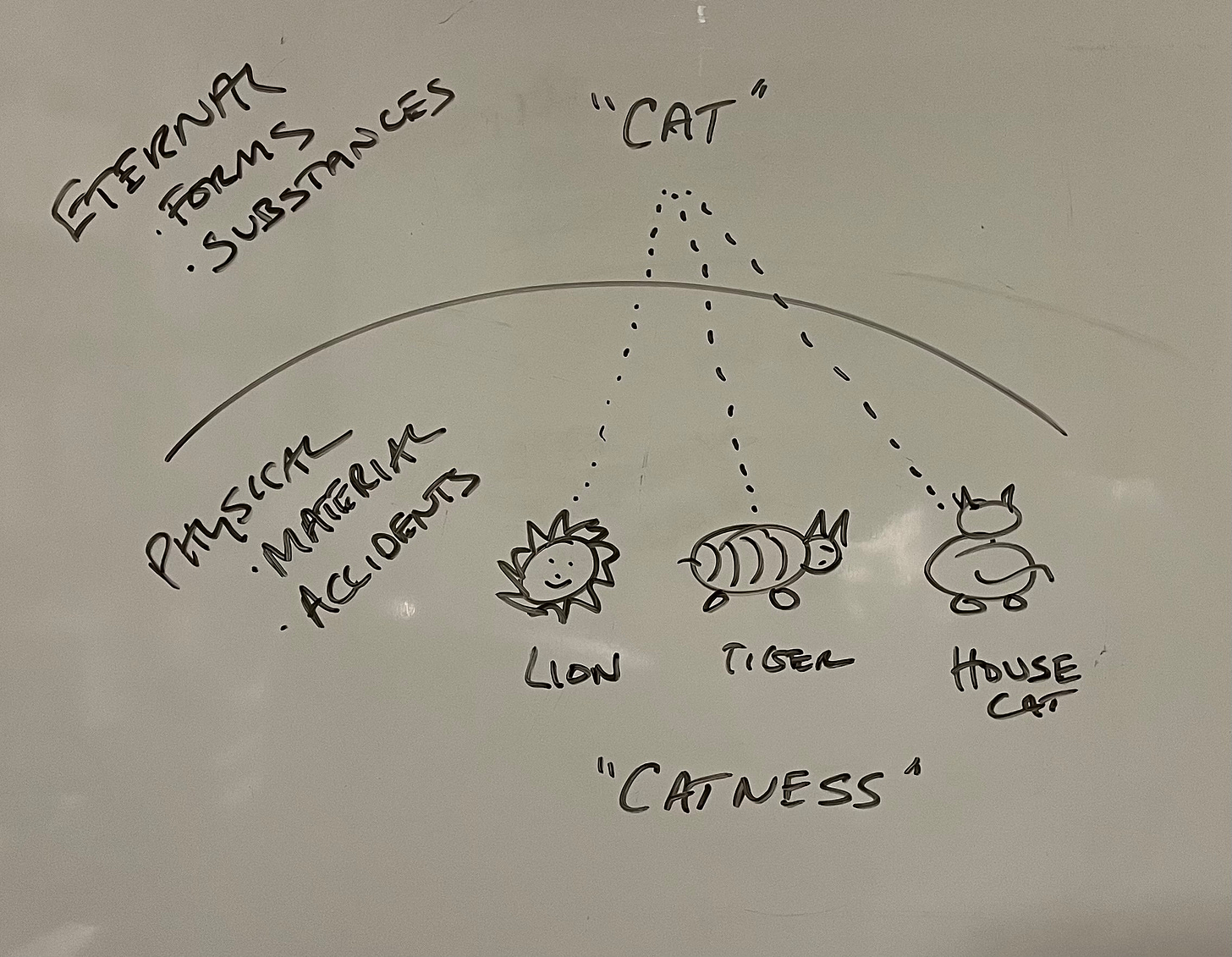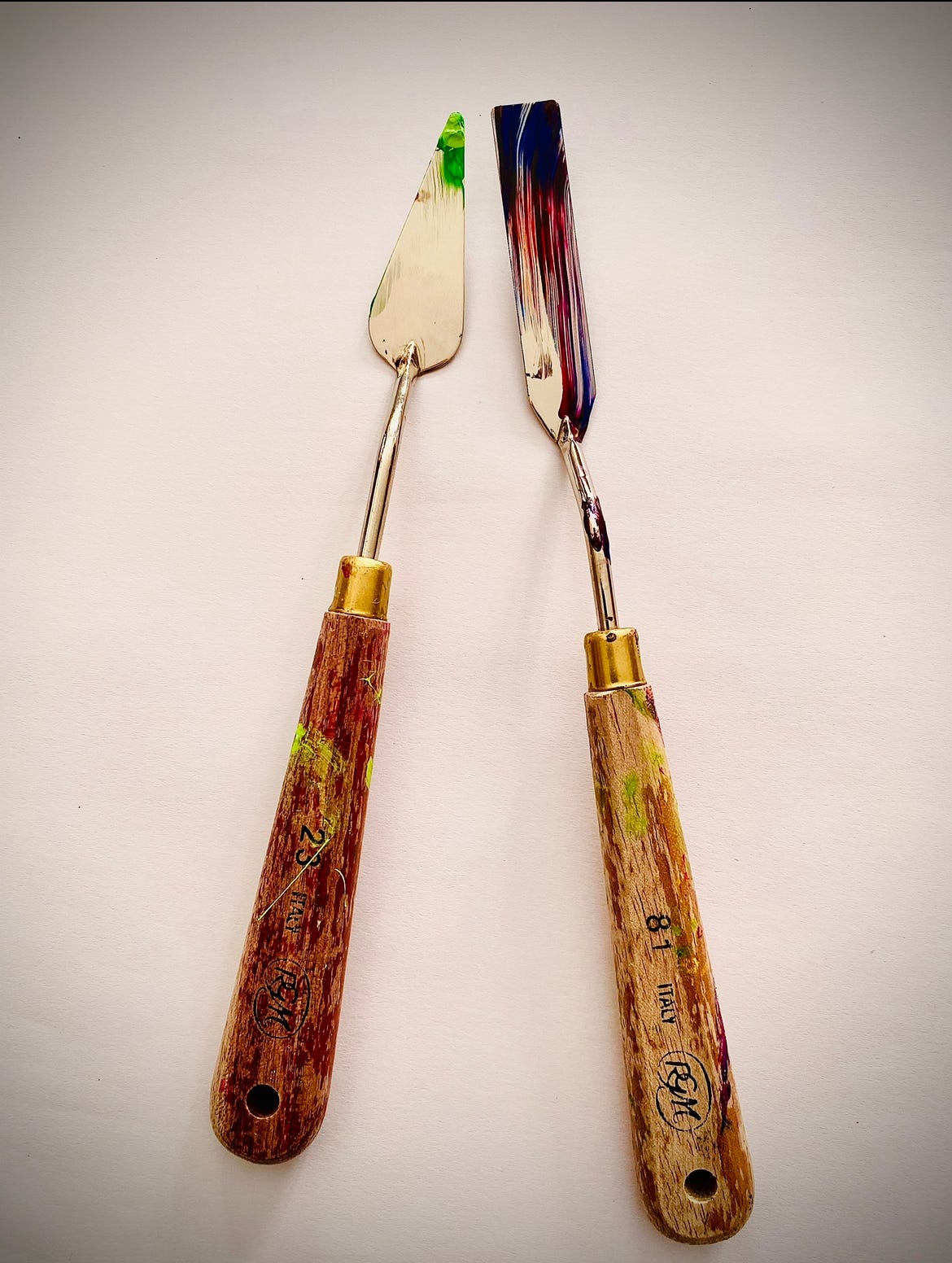Welcome aboard The Bus!
The Stop
Transubstantiation is a Christian doctrine predominantly taught by the Roman Catholic church to explain how the ‘substance (though not the appearance) of the bread and wine in the Eucharist becomes Christ’s real presence – that is, his body and blood.’ The doctrine – which traces itself to the early Christian fathers1 and becomes elaborated during the Scholastic period,2 was formalised by the Council of Trent3 and reaffirmed by Pope Paul VI in 1965. A central tenet designed to ‘safeguard the literal truth of Christ’s presence while emphasis[ing] the fact that there is no change in the empirical appearances of the bread and wine,’ the doctrine’s metaphysical roots can be traced to the dualism of the ancient Greek philosopher Plato.4
Platonic dualism maintains that there are two ‘worlds’ – the everyday material world which we inhabit and the eternal world which is immaterial and (for lack of a better word) spiritual in nature. The eternal world contains the Forms - the non-physical, perfect essences of things - which are at best poorly imitated in the objects and matter composing the material world. For example: cats exist in the material world and appear in different forms – house cats, jaguars, tigers, and lions. Though all are very different creatures (and one wouldn’t confuse a house cat with a lion), the animals nevertheless share a common quality which might be described as their ‘catness.’ In Platonic terms, this shared quality of ‘catness’ is their ‘substance’ - what they really are - while their physical attributes (fur, teeth, hairballs, meow, roar, etc.) are their ‘accidents.’ All cats – lions, tigers or house cats – are ‘cats’ because they share this common, perfect substance – but they are all different because they are imperfect copies. Similarly, bread in the physical world appears with different accidents, thus giving us baguettes, sourdough, wholemeal, soda bread, dirt-cheap white, and those artisan loafs endlessly documented on Instagram. As imperfect copies, they are all different, but they are nevertheless ‘bread’ because they share the common substance of ‘breadness’ which exists in the world of the Forms (see Fig.1).

Transubstantiation is believed to work metaphysically because of this relationship between the eternal and the physical worlds and the connection between the perfect Forms and their imperfect copies. Just like bread and cats – which get their essential nature from the substances they copy – in the eternal world there is also the Form of Christ’s body and the Form of Christ’s blood. Christians who believe in transubstantiation believe that the priest, using special powers conferred upon him at ordination, can effect an actual change in the eternal world of the Forms. During the Eucharist, when blessing and consecrating the bread,5 the unique formulation of the words he uses causes the Form of ‘bread’ to exchange with the Form of ‘Christ’s body,’ changing on a substantial level the material he is blessing. Though there is no change to the physical bread – it still looks like bread, tastes like bread, smells like bread, etc. – where it really matters there has been a change and thus, a believer takes into his or her body the body and blood of Christ.6
The Detour
Today’s Detour is to Montréal, Snowbec (5:25), a short film by Ezra Soiferman. This is a video love letter to his hometown - in particular the beauty and ferocity of Montréal’s winter weather and the way the city deals with it to keep life carrying on at sub-zero temperatures. There are also some lovely urban snowscapes. Enjoy!
The Recommendation
Today’s recommendation is Wonder Boys (2000). Based on the 1995 novel by Michael Chabon and starring Michael Douglas, Frances McDormand, Robert Downey, Jr., Katie Holmes and Tobey Maguire, the film - though a critical success - had a poor reception at the box office, but has since gained a cult following. Douglas plays Grady Tripp, a professor of creative writing, who is having an affair with the chancellor of his university - who also happens to be the wife of the chairman of the English department in which he works. Tripp, author of an award-winning first novel, is struggling with his second - which after seven years has become an endless tome over 2500 pages long and showing no sign of ending. Grady’s third wife has just divorced him, the chancellor tells him she’s pregnant with their child, his editor is in town wanting to see his latest work - and a troubled but gifted student from his writing class has just shot the chairman’s dog and stolen a jacket worn by Marilyn Monroe. And that’s just the beginning. It’s a great film - one of my favourites - and one I highly recommend. Let me know what you think. Oh, and the novel is great, too.
Wonder Boys is currently streaming on various platforms.
The Sounds
Today’s playlist is composed of five funk or funk-inspired tracks: ‘Every 1’s a Winner’ (Hot Chocolate, 1978), ‘Right Place Wrong Time’ (Dr John, 1973), ‘Strawberry Letter 23’ (The Brothers Johnson, 1977), ‘Can You Get to That’ (Funkadelic, 1971) and ‘Didn’t I’ (Darondo, 1973). Enjoy!
The Thought
Today’s Thought is from the 17th century Japanese soldier-artist-philosopher Miyamoto Musashi:7
‘Truth is not what you want it to be; it is what it is. And you must bend to its power or live a lie.’
If you have a thought on this Thought - or any part of today’s issue - please leave a comment below:
And that’s the end of this Stop - I hope you enjoyed the diversion!
Thanks to everyone who subscribes - your interest and support is truly appreciated. If you like The Bus, please SHARE it with a friend or two.
If you haven’t climbed aboard The Bus, please do!
If you like The Bus, why not check out other newsletters? Each morning, The Sample sends out articles from random blogs and newsletters from across the web that match your interests. If you like one, you can subscribe with one click. I’ve signed up to several and highly recommend it.
Until the next Stop …
Ambrose (339 CE- 397 CE) - who baptised the man who would become St Augustine - noted that this presence was so real that if a mouse ate consecrated bread, the mouse would be eating the body of Christ. Though both will be future Bus Stops, for more information on Ambrose, see: St Ambrose (Britannica) and for Augustine, see: St Augustine (Britannica)]
This period of medieval scholarship is generally dated to the 13th and early 14th centuries. Though Aristotle was the primary Greek philosopher, he was a student of Plato and thus strongly influenced by Platonic ideas. For more information, see: Scholasticism (Britannica).
Running from 1545-1563, this Council was called by the Roman Catholic Church to address challenges it faced from emerging Protestantism. For more information, see: Council of Trent (Britannica)
For as long as I can remember, I’ve found this part of Christian theological history fascinating. Nothing is created in a vacuum, and for me it’s the myriad possibilities - the what-might-have-beens - that are at least as interesting as the ideas which eventually were deemed ‘correct.’ For more about Plato, in particular his Analogy of the Cave, see The Bus Issue 1.27 (7.7.22). Sources for today’s Stop include Plato's Dualism (Britannica), Plato's Metaphysics (Britannica), Transubstantiation (Britannica), and Plato (Stanford).
It could be any sort of bread, but is usually in the form of a wafer-like Host.
The same occurs when the priest consecrates the wine – it still looks, tastes, smells, etc. like wine, but on a substantial level it is now the blood of Christ.
For more on Musashi, see: Musashi (Britannica).








hey they also do sweet remix of the little known but utterly sublime This Love by Harlem's Joytones titled 'What I'm Giving You'. im always blinking back a tear ever time.
I feel like me asking you to write about the allegory in the cave is like asking a musician to play freebird ya know?